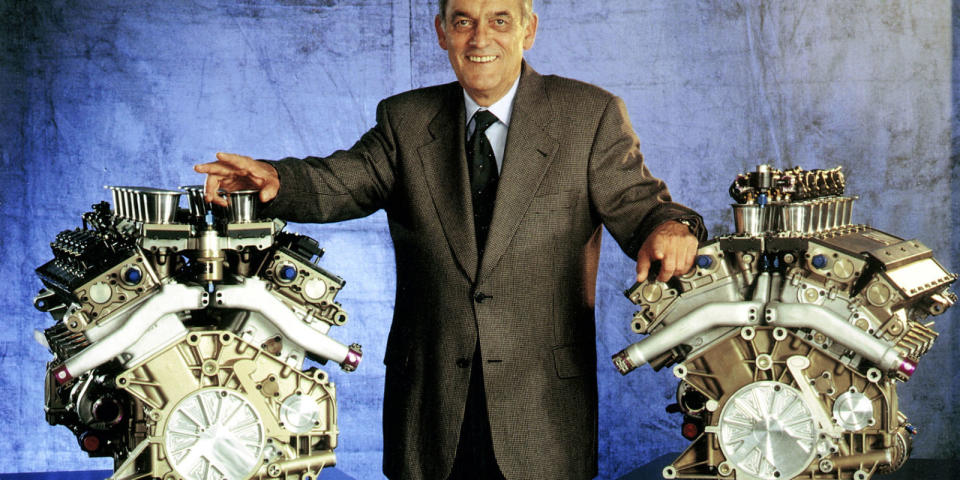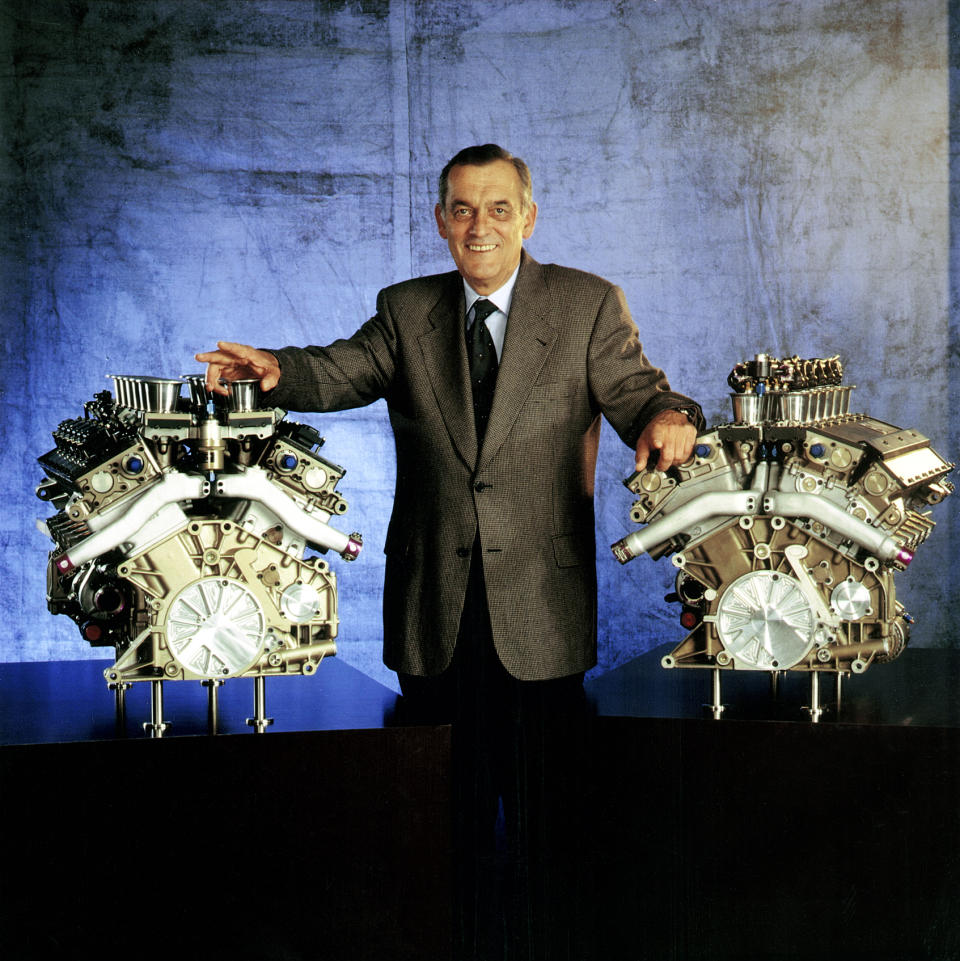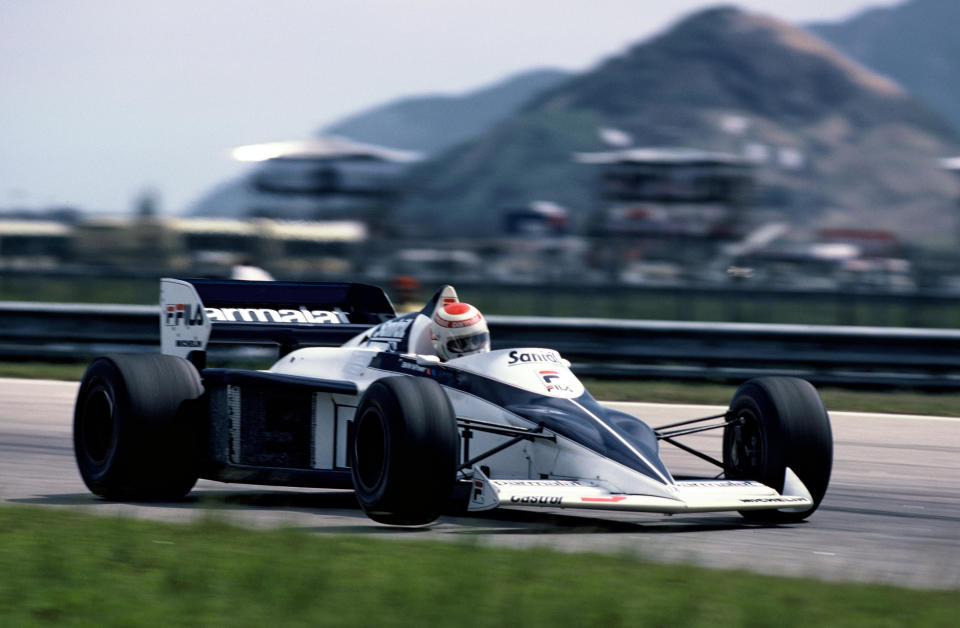The Man Responsible For BMW's Incredible Motorsport Engines Has Died


Paul Rosche, an engineer responsible for some of BMW's most memorable race engines, died Tuesday in his home town of Munich. He was 82.
Rosche's impact on BMW almost cannot be overstated. He held various roles there from 1957 to 1999, but he's most known for designing or leading the development of high-performance engines during the marque's golden age. This includes every production M motor of the last century, but also the Le Mans-winning, 6.0-liter V-12 in the 1999 LMR and McLaren F1; the BMW-Williams F1 V-10 of 2000; and the 1300-hp, production-based four that took Nelson Piquet to an F1 world championship in 1983. Rosche was the chief engine whisperer at a company with the word "motor" in its name, a brand that has produced some of the greatest powerplants in history.
The scope of the man's influence is staggering. Consider the timeline: When Rosche started at BMW, he was just out of college. Munich had not yet produced the 2002 or 3.0 CSL, and there was no M division, not even a separate competition department. The company's first world-beating six-cylinder wouldn't appear for years. When Rosche retired in 1999, he had helped build most of those icons and taken BMW to Formula 1 twice.
I'd tell you more, but I'd rather point you to the work of another man I admire. Rosche's Nineties retirement was marked by the late Bob Roemer, of the BMW Car Club of America's Roundel. (Fun fact: Roemer started the letter-writing campaign that helped convince BMW to sell the E36 M3 in America.) The story he wrote holds passages like this:
**
That stamp is one of technical superiority and personal modesty. Whenever he is complimented on his achievements, his first reaction is usually a sheepish grin and a shrug of the shoulders. One of Rosche's most memorable quotes came when Swiss driver Marc Surer asked him about the incredible power of his BMW F1 turbo engine.
"I could spin the rear tires in fourth gear," Surer said incredulously. How much horsepower was there?
"At least 1300," replied Rosche.
Surer persisted. "But can you be exact?"
"It's probably more," Rosche said, pausing for effect and giving his trademark shrug of the shoulders. "But I don't know how much more-that's as high as our dyno goes."
**
How do you not love a guy like that?

I grew up reading about Rosche; I was and remain a shameless vintage-BMW fanboy. Mostly due to the thread that seems to run through every machine the brand spit out in the last century. They were honest things, far from perfect but developed around a central philosophy: Create an incredible engine, bolt it to a frame that wants more power than you give, and tweak the whole package to be sharper and more durable than anyone would think. Trust the driver to make proper use of that, and don't water down your work for idiots. The byproducts were things like DTM cars with license plates, but also an emotional gut-punch that never wavered over decades of evolution.
And Rosche indirectly pulled me into this business. I've owned or raced a handful of 2002s and two dozen E30s; I've driven more old BMWs and M cars than I can count. For a short while after college, I was a full-time BMW mechanic. (That gig taught me many things, chiefly that I was too in love with wrenching to ever do it on a clock.) I was drawn to roadgoing BMWs partly because of the thread to Rosche's work, and what those machines made me want to learn. I became a car writer to chase that feeling.
The job has only widened the lens. I've been lucky enough to have a 3.0 CSL under my right foot, but also an M1 race motor and a 300-hp E30 M3 DTM car with valves made of gossamer. Those cars share various traits, but late at night, when I can't sleep, I think of only one. You can hear it on YouTube and old VHS tapes, almost feel it when you run your fingers over the valve cover of an S14. It is Rosche's legacy, that old-school, screamy yawp, and you can't turn the key on a 2002 or even an F82 M4 without getting just a bit of it.
The German enthusiast press called him "the motor pope." His friends called him Nocken-Paule, or Camshaft Paul. He ranks with lights like Aurelio Lampredi, Vittorio Jano, Leo Goosen. And if you want a real obituary, just sit down and listen to this clip.
God help the fools who aren't smart enough to turn it up.
You Might Also Like

 Yahoo Autos
Yahoo Autos 